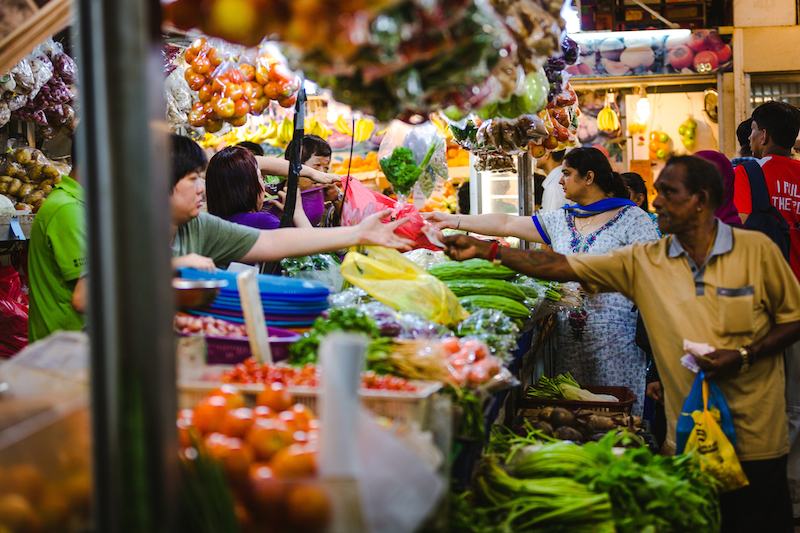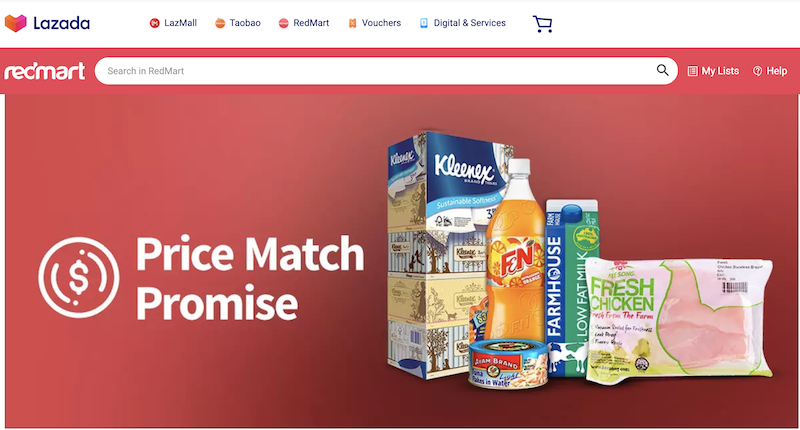For many Singaporeans, morning trips to the wet market with parents were a defining childhood memory. Somewhere along the way, the weekly grocery shop experience shifted to the more convenient, air-conditioned environment of supermarkets, of which there were 577 in Singapore in 2020, offering greater selection, value, and a quick ‘grab and go’ alternative to wet markets.
SEE ALSO : Top busiest shopping days of the 2021 holiday season across Asia Pacific
All of that changed again in 2011 when Singapore’s first online grocer, RedMart took on the titans of traditional grocery shopping and disrupted the country’s grocery sector by offering a new and unprecedented level of convenience to consumers.

As the nation’s love affair with online grocers exploded over the course of the decade, new, smaller entrants entered the market, diversifying the scene, each with their own unique offering and product range. In the latter half of the decade, according to international grocery research firm, IGD, Singapore’s online grocery market grew threefold from a value of S$130 million (US$96.4 million) in 2017, to over S$500 million (US$370.94 million) in 2020. This growth shows no sign of slowing as it is expected to grow by a further 35 percent by 2022.
The New Norm of Online Grocery
The enduring pandemic which took hold in 2020 brought with it a pivotal change in consumer behaviour and habits. As Singapore, like the rest of the world, fought to control the spread of COVID-19 with a series of Circuit Breakers, consumers were encouraged to stay at home and shop online to procure goods and services to avoid physical interaction.
In turn, as the pandemic tightened its grip, many turned to online grocers for a contactless, hygienic and convenient way to satisfy their daily needs and maintain a semblance of normalcy at home. This resulted in an unprecedented rate of acceleration of demand for groceries, but one that was manageable as RedMart had long anticipated growth in the sector with plans to deliver 25,000 daily orders by 2025.

When the government raised the nation’s DORSCON risk assessment to orange, panic buying caused RedMart’s sales to quadruple, with unique site visits increasing up to 11 times the usual traffic. The emergence of different clusters also caused demand for specific food items, for example, the Jurong Fishery Port outbreak drove up demand for fresh fish.
To manage the demand forecast to unfold by 2025, Lazada made a substantial investment in a brand-new automated grocery distribution Centre (West Fulfillment Centre-FC) almost 5 years ago. That foresight ensured the growth over the last 18 months was manageable as staff tapped on the larger facility to utilise its state-of-the-art automation to reduce human touchpoints with food before it reached customers. This allowed RedMart to serve 50 percent more households, while maintaining the same headcount, all through boosting efficiency and productivity levels, paving the way for the Center to cater to the future demand for groceries in Singapore.
However, the pandemic highlighted that Singapore’s food security could be vulnerable to external events like future pandemics and natural disasters. West FC and its increased capacity to store produce, helps contribute to Singapore’s food security, keeping the nation fed day-to-day, and importantly, in times of need.
The Evolving Palette and Preferences for Groceries
Looking ahead to the future of grocery shopping in Singapore, there will be many more evolutions tagged to Singapore’s ever-evolving food preferences and changing consumer habits. One change which is already prevalent, is the increase in demand for international grocery products and brands. As travel was restricted, and Singaporeans watched global food trends unfold over social media, RedMart welcomed more global brands to its platform to cater to changing tastes. A survey conducted by Facebook in Singapore revealed that 75 percent of respondents were open to exploring new brands.
Now, with just one-click, consumers can access extensive product ranges from international supermarkets such as Australia’s Woolworths, Britain’s Sainsbury’s and South Korea’s Lotte Mart, the list is endless.
Not only do online grocers give consumers the range of choice and new products they crave, but they also help those in Singapore who are separated from their home countries access their nostalgic foodie favourites.
Being foodies at heart, Singaporeans also experimented with, and enhanced their culinary skills in the wake of Circuit Breakers, with a 30 percent increase in demand for fresh and frozen products from 2019 to 2020. This boost, coupled with the wide array of international products available on the platform, will have a knock-on effect on the eating habits and tastes of Singaporeans which opens the door to endless economic possibilities for the already diverse local food scene.
Another trend that socially conscious Singaporeans have accelerated over the past year is that of seeking out locally grown produce. To support local industry, RedMart’s house brand stocks over 400 products, of which more than 50 percent of these items are produced with local partners and suppliers, with that number growing steadily. For example, the RedMart X Fishball Story premium fishball range was introduced after working with Douglas Ng, founder of Michelin Bib Gourmand winner, Fishball Story.
Not only do online grocers help local food businesses reach new audiences, but they are also able to support digitalisation to future-proof their income stream. Further, smaller businesses can benefit from the initiatives offered by larger platforms, like partnering with the SG Farmers’ Market or selling via RedMart’s private label.
SEE ALSO : 5 e-commerce marketplaces in Singapore, Malaysia to know right now
With an automated and data-driven approach to managing Singapore’s online grocery demand, grocers are primed to steer Singapore through the next evolution in the way consumers procure food and household goods online.
Author
Richard Ruddy, Chief Retail Officer and Head of Grocery, Lazada Singapore




